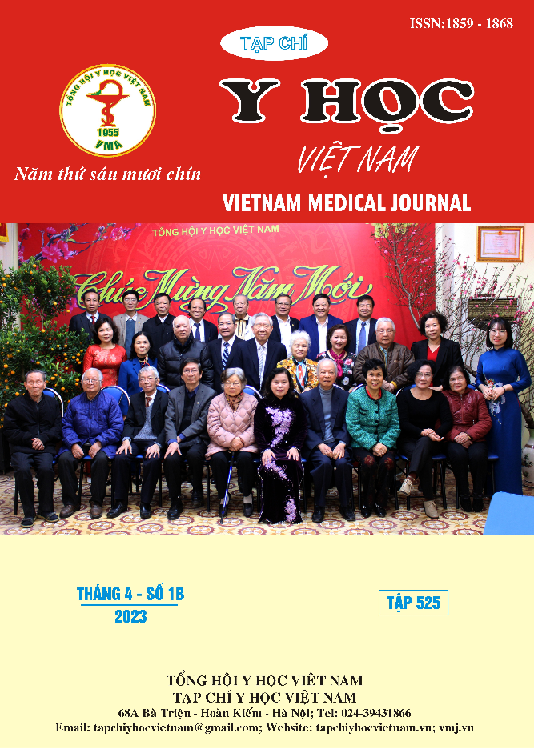PROXIMAL RESULTS OF SURGERY TO TREAT CHIARI TYPE I MALFORMATION IN ADULTS
Main Article Content
Abstract
Objectives: To evaluate the proximal results of surgery in the treatment of Chiari type I malformation in adults. Subjects and methods: A prospective, descriptive and cross-sectional study of 45 adult patients (≥18 years) diagnosed and surgically treated with Chiari I malformation at the Department of Neurosurgery, Cho Ray Hospital from January 2016 to December 2019. Results: There was a patient with post-operative meningitis (2.22%), two patients (4.44%) with postoperative cerebrospinal fluid leak, two cases of galea fluid accumulation (4.44%), four patients (8.9%) with surgical site infection, in which, three cases had to be re-operated. All patients were monitored and re-examined after surgery during 6 and 12 months. At 12 months, the clinically good outcome was 93.33%; the unchanged result was 6.67%. Conclusion: Most of the patients had a good improvement in their symptoms after surgery.
Article Details
Keywords
Chiari type I malformation, Proximal outcome, adults.
References
2. Hale Öktem, Alper Dilli, Ayla Kürkçüoğlu, et al. (2016). Prevalence of Chiari type I malformation on cervical magnetic resonance imaging: a retrospective study. Anatomy, 10(1): 40-45.
3. Nasser MF El-Ghandour (2012). Long-term outcome of surgical management of adult Chiari I malformation. Neurosurgical review, 35: 537-547.
4. Saniya S Godil, Scott L Parker, Scott L Zuckerman, et al. (2013). Accurately measuring outcomes after surgery for adult Chiari I malformation: determining the most valid and responsive instruments. Neurosurgery, 72(5): 820-827.
5. Scott L Parker, Saniya S Godil, Scott L Zuckerman, et al. (2013). Comprehensive assessment of 1-year outcomes and determination of minimum clinically important difference in pain, disability, and quality of life after suboccipital decompression for Chiari malformation I in adults. Neurosurgery, 73(4): 569-581.
6. Leonardo Aliaga, Katherine E Hekman, Reza Yassari, et al. (2012). A novel scoring system for assessing Chiari malformation type I treatment outcomes. Neurosurgery, 70(3): 656-665.
7. Nicholas M Wetjen, John D Heiss, Edward H Oldfield (2008). Time course of syringomyelia resolution following decompression of Chiari malformation Type I. Journal of Neurosurgery: Pediatrics, 1(2): 118-123.
8. Vicko Gluncic, Michael Turner, Delilah Burrowes, et al. (2011). Concurrent Chiari decompression and spinal cord untethering in children: feasibility in a small case series. Acta neurochirurgica, 153(1): 109-114.


